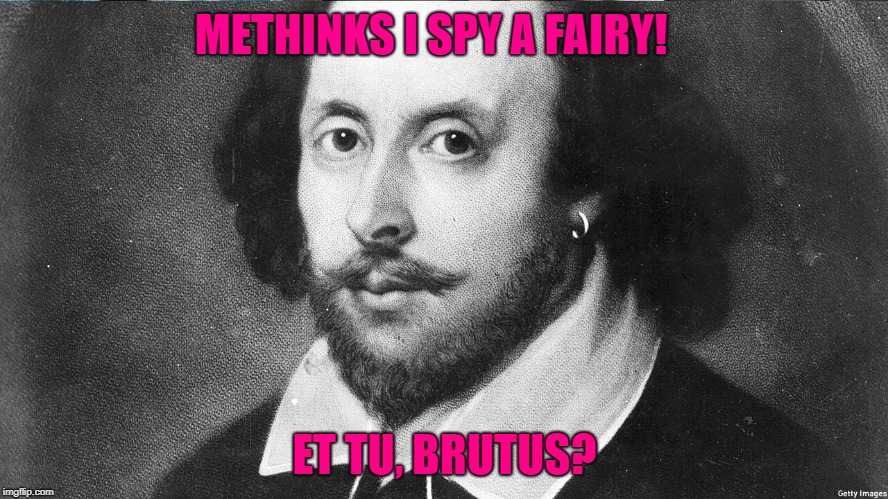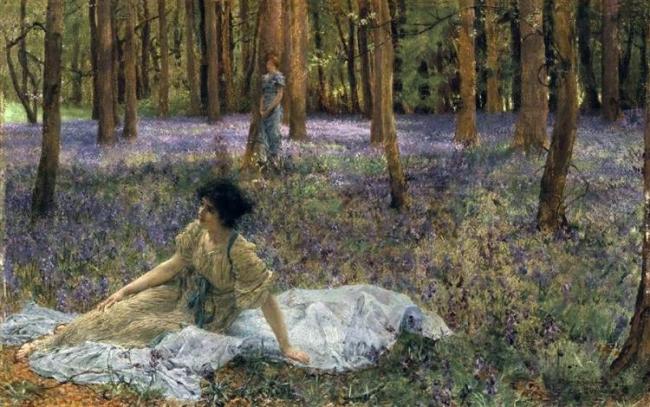
Today, June 24th is International Fairy Day! Yes — we have a day for everything – from black cats, to goths, to grandparents, so it should not surprise us that fairies also get their due!
Whether you think of them as dryads, sprites, red caps or the tall stately race of Sidhe, today is a day to honor them – and possibly lift the veils that separate our world from theirs. Fairies are a topic close to my heart, so I thought I’d do some sleuthing to give you some weird, scary and thought provoking facts.
A (Very Brief ) History of the Fae
The word “fairy” derives from the Latin fata, meaning “goddess of fate” and from the Old French faerie, meaning “enchantment”. Hence, a fairy tale is a tale of enchantment, not necessarily about fairies. Fairy folklore has been explored in just about every culture known to humankind.
The earliest recorded mention of fairies comes from 1000 BC in The Iliad, where Greek poet Homer wrote “watery fairies dance in mazy rings”. The next oldest recordings come from 12th century England, by historian Gervase of Tilbury. He wrote of small fairies called ‘portunes’, and a fairy hill where a knight could call for a stallion at midnight, then challenge a fairy to a duel. Gervase also wrote about fairy lovers — troops of naked men and women who appeared at night, and mentioned the idea of human virgins being given ‘Second Sight’. Geoffrey Chaucer, circa 1380, also alluded to fairies in The Wife of Bath’s Tale from Canterbury Tales.
How did fairies come to be? There are several legends that explain the origins of fairies. One belief is that when Lucifer was cast out of heaven, some of the angels followed him. Most of them ended up in hell, but some got stuck in a type of earthly realm, or interdimensional earth. This was the realm of fae, where they remained.

Another belief holds that fairies are simply nature spirits, ever present in the elements. They always have been and they always will be — sylphs of the air, nereids of the water, gnomes of the earth and salamanders of the fire.
Another theory states that fairies are spirits of the dead, changed to a supernatural form. This theory became popular during Victorian times, when ‘death cults’ were a large part of society.
Although fairies are always in vogue, they seemed to have had their literature and publicity heydays particularly in the 16th – 18th centuries. Some folklorists claim that during these simpler, more naturalistic times, fairies were visible and even lived side by side with humans.
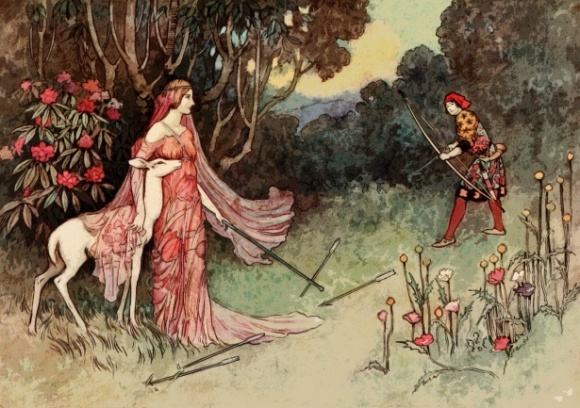
However, as our world became more industrialized, fairies, being allergic to metal and machinery, had to hide deeper within their realms. Eventually human beings could scarcely see them at all.

Shakespeare & the Changelings
Of course, Shakespeare famously wrote of fairies in his play ‘A Midsummer Night’s Dream’, and also in ‘The Tempest’. During Shakespeare’s childhood years in Stratford, most folk had a very real belief in fairies. Fairies were more than just ethereal and transient beings, but part and parcel of the culture. One theme of Midsummer Night’s Dream is the changeling child that fairy queen Titania tries to protect.

Country folk in Shakespeare’s time had a deep fear of changeling encounters. They thought fairies would come at night and kidnap their babies – leaving a replacement called a ‘changeling’ which was often a sick or weak fairy.
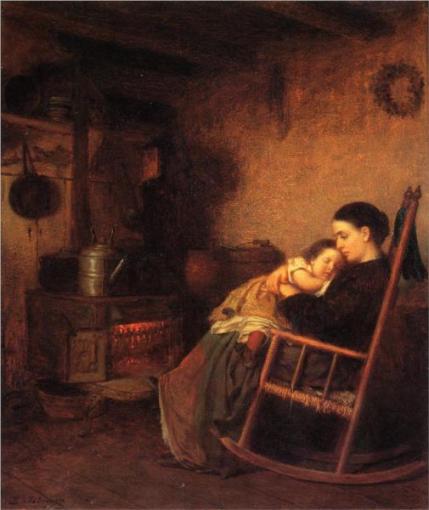
Fairies were particularly eager to kidnap human boys, and for this reason, boys were dressed in girl’s clothes. Their hair would be let to grow long – thus fooling the fairies into thinking the boy was a girl, and therefore saving him from being kidnapped. When the little boy was seven years old, he could finally be ‘breeched’ – that is, put in his first pair of britches rather than a girl’s gown – and his hair could finally be cut.
The Unusual Case of Brigid Cleary
One horrific, real life fairy encounter happened in 1895 Ireland, when Michael Cleary, a Tipperary farmer, threw his wife Brigid in the fire because he believed she was a changeling.
Sounds bizarre, right? Especially since it occurred at the relatively late date of 1895.
Brigid, reportedly a hot, 26 year old girl-about-town, either got caught up with the wrong group of fairies, or took ill, depending on how you look at it.
One court transcript of the case states: “Michael Cleary claimed that his wife Brigid had been taken by fairies and they had left a changeling in her place. On the 15th of March, 1895, Michael Cleary, having spent three days in various rituals intended to force the changeling to leave and bring his wife back, set fire to her.”
And Michael was not working alone! He and nine other relatives of Brigid were put on trial for her death. In the end, Michael and two other men were convicted and served time.
Fairies and Witches
Of course, the fairies aren’t all bad; they also teach us things, give clairvoyance and grant magical powers. Fairies have a longstanding symbiotic relationship with witches. There are several historical documents which attest to this.

A 1566 pamphlet printed in London detailed the interrogation of the ‘Cunning Man’ (aka witch) John Walsh, who claimed to have midnight meetings with the Fey court on various mounds and barrows in Dorset.
In 12th century Wales, historian Giraldus Cambrensis wrote an account of a boy named Elidorus who was led to an underground realm where he met “an honorable and devout fairy race” who taught him their language.

A Scottish woman named Elspeth Reoch was accused of witchcraft and tried in Kirkwall on March 12, 1616. At her trial, Elspeth claimed she had received instructions on how to acquire magical powers when she was twelve years old, staying with an aunt in Lochaber. There she saw “two fairy men” by a loch. After taking her a little way away from her relatives’ home, one of the men offered to teach her how to gain the second sight:
“And she being desirous to knaw said how could she ken that. And he said tak an eg and rost it. And tak the sweit of it thre Sondais and with onwashid handis wash her eyes quhairby she sould sei and knaw any thing she desyrit.”
(My best translation – she boils an egg and uses the water to wash her eyes for three consecutive Sundays. She is then given clairvoyant powers.)

Elspeth also professed to being able to cure illness by reciting chants while plucking petals from the melefour herb. She was a vagabond wanderer and a ‘loose woman’ — having had many sexual encounters with men, both human and fairy. She gave birth to several children who may or may not have been entirely human…
Elspeth was found guilty of witchcraft and executed by strangulation.
Andro Mann, who was put on trial for witchcraft at Aberdeen in 1598, spoke of his many encounters with the Queen of Elphame (queen of elves’ home.)
“The Quene of Elphen, promesit ot the, that thow suld knaw all thingis, and suld help and cuir all sorts of seikness, except stand deid… and thow confessis that thow can heal the falling seikness [epilepsy], bairnes, bed and all sort of vther seikness…”
(My best translation – the fairy queen teaches him to cure all sorts of sickness, but not to raise the dead. He cures epilepsy, helps babies, and cures many other things…)
Mann also confessed that on the Holy Rood Day, the Queen of Elphame and her court appeared out of the snow, riding white horses. She and her companions had human shapes, “yet were as shadows”, and that they were “playing and dancing whenever they pleased.” Andro also stated the Queen was a shape shifter and “she can be old or young as she pleases”.

Marion Grant, of the same coven as Andro Mann, claimed to witness the queen as a “fine woman, clad in a white walicot.” Similarly, accused witch Isobel Gowdie’s confession described the “Qwein of Fearrie” as handsomely (“brawlie”) clothed in white linen and in white and brown clothes, and providing more food than Isobel could eat.
Dead Man Talkin’
Bessie Dunlop, who was accused of witchcraft in 1576, confessed that she had contact with the spirit of a dead man named Thom Reid. Thom was one of “the good neighbours or brownies, who dwelt at the Court of Faery and gude wychtis that wynnitin the Court of Elfame.”
** I should note that the ‘good neighbors’ are a general term for fairies, and ‘brownies’ are a certain type of house fairy who may inhabit your home to do some cooking and cleaning. (I know! I want one!)
Bessie stated the fairy court had come to take her away, but she refused to go. This angered Thom. Thom then took Bessie by the apron and “wald haif had hir gangand with him to Elfame.” (Thom forced her into going with him to elves’ home.)
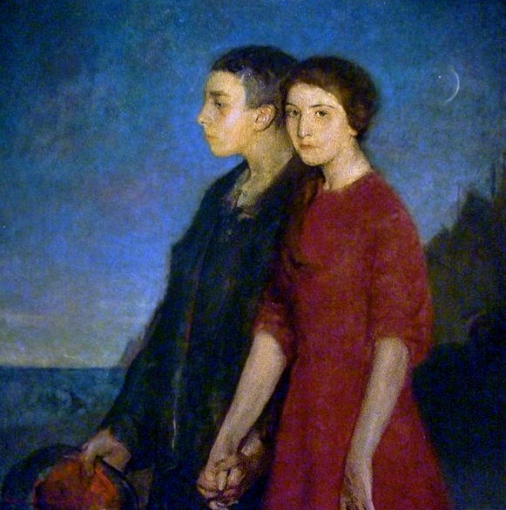
Bessie was told that the queen had secretly visited her before, and according to Thom, when Bessie lay in bed in child-birth, it was the “Quene of Elfame” who in the guise of a stout woman, had offered her a drink and prophesied her child’s death which came to pass.
** It is helpful to remember that all these people were under oath and on trial for their lives. This leads me to wonder – if the stories of Elphame were NOT true — why would they volunteer such detailed and elaborate lies? They had to know they would definitely anger the authorities, thus ensuring their own deaths. Hmmm…
Fairies and UFOs
Now the fun part!
The 20th and 21st centuries have seen a plethora of recorded data on people who claim to have been kidnapped by aliens. However, many of these encounters have astonishing similarities to changeling stories and fairy encounters of old.
Some UFO investigators believe that so called ‘extra terrestrials’ are actually beings of planet earth. They have been living here the whole time, but hidden in other dimensions. These are called ‘Ultra terrestrials’.
Consider some astounding similarities of alien encounters and fairy encounters:
1) Both are kidnappers! Fairies are well known for kidnapping people. UFO aliens are also known to kidnap people, abduction being the most common recorded encounter.
2) Time is different. Those who are abducted by aliens report incidents of missing time, a phenomenon very similar to time lapses reported by people taken to and returned from “fairyland”. (One day in fairy land might equal a whole year in human time. )
3) They look alike! Fairies, like modern aliens, are usually slim creatures with large magical eyes, high cheekbones and pointed ears.

4) They both use magical devices. Many reports of alien abduction include “power rods” used to paralyze abductees — just as fairies wield “magic wands”.
5) Both are obsessed with human fertility and stealing babies. A large part of modern UFO literature involves aliens abducting women, impregnating them, and later abducting them again to take the unborn baby right out of the womb. Abductees also report of eggs and sperm being taken. Besides the changeling phenomenon, fairy encounters often tell of men and women becoming sterile or barren after their visit.
6) Fairies are closely associated with nature, just as modern aliens also display a certain obsession with environmental issues. One common alien abduction scenario involves aliens showing ‘movies’ that depict environmental degradation, then giving their victims lectures on caring for the earth before they release them.
Beam Me Up, Scottie!
Quantum physicists tell us that many additional dimensions of reality actually do exist. There are, reportedly, eleven different dimensions that can be mathematically proven on a quantum level. In these added dimensions, it is possible to move through time and space with ease, be two places at once, and do other cool Star -Trekkie type things. This too is the stuff of fairyland. Besides, everybody knows that Spock is actually a fairy 🙂

If Extra/ Ultra Terrestrials can exist “above” or “beyond” our normal time-space reality, that means they can easily see us, trick us, manipulate us and meddle in our affairs. Which is what fairies have been doing for years! We, on the other hand (usually) can’t see them at all.
Seeing and Attracting Fairies
Fairies are known to cross the veils mostly during the Sabbats – especially Beltane, Midsummer and Samhain. However, International Fairy Day — although a modern creation — must be an excellent time to attract them as well!
If you would like to encounter fairies, it is best to keep yourself attuned with nature and tapped into meditative states. Also, they often appear in dreams.
The best places to see them are: river banks, seashores, beaches, intersections of roads, foothills, thresholds, stairwells, landings and hallways. (In short, where one thing turns into another — water turning into earth, rooms connecting, etc )

The best times to see them are daybreak, noon, sunset and midnight, (This too is when one time turns in to another — day to night, AM to PM.)
Legend has it that they are partial to sweets and milk – so if you want to attract them, it is best to leave some sweets on your table or in your garden.
Also, they like bells! Hang a wind chime in your window, and let it ring out in the open breeze, and one of them just may come through your window…
But be careful. Fairies are known to be kinky, provocative, sexually aggressive and mischievous! If you end up in fairyland you will be changed forever 🙂
Happy Fairy Day!

